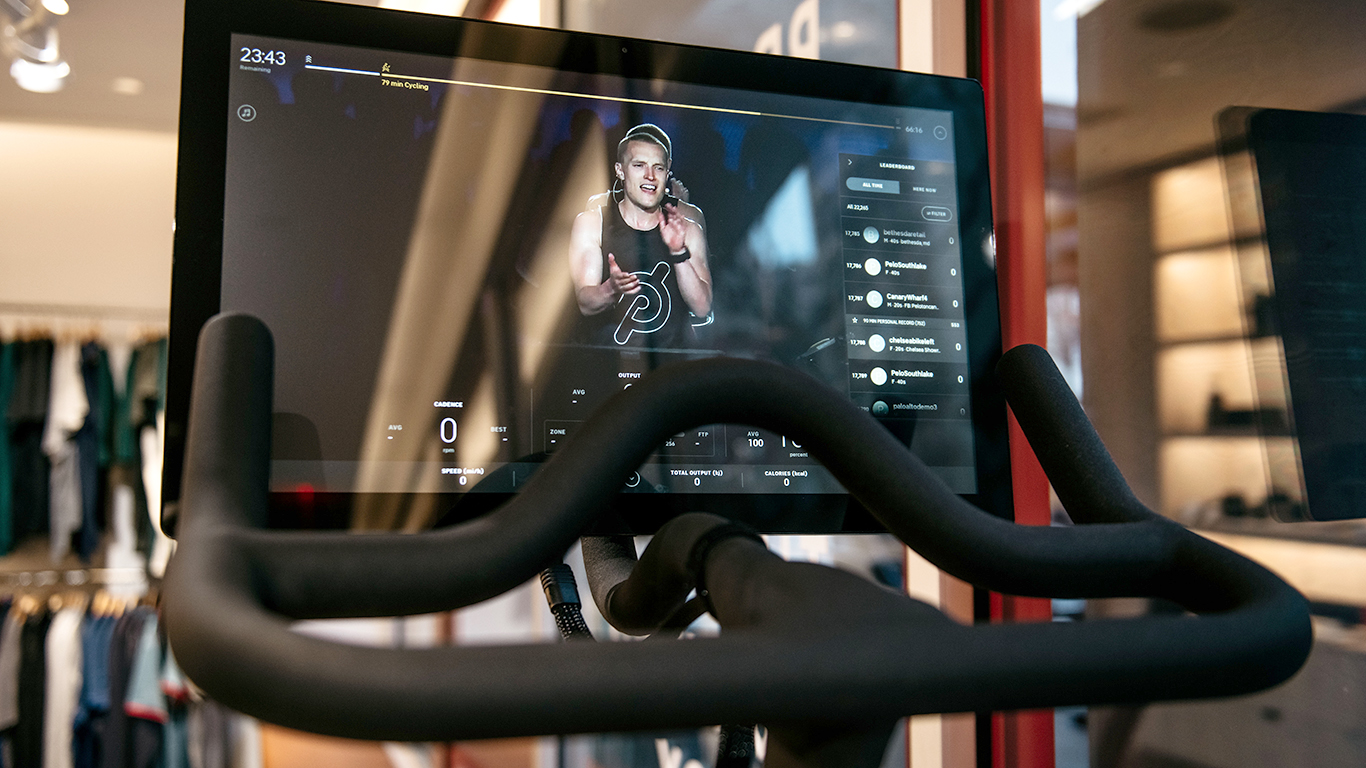
Exercise bike and interactive fitness platform provider Peloton Interactive Inc. (NASDAQ: PTON) saw its stock price rise by more than 450% in the 12-month period from January 2020 to January 2021. Stay-at-home orders due to the COVID-19 pandemic played a huge part in the company’s rise.
Like at things that can’t last, Peloton’s soaring stock price didn’t last either. Since that peak in January 2021, Peloton stock has dropped by 97%. And there’s not a lot of confidence that a turnaround is in the company’s near future.
A new downgrade

Canaccord Genuity cut its rating on the stock from Buy to Hold after Peloton reported quarterly results last week. The firm left its price target at $5 a share.
Also last week, BofA analysts Curtis Nagle and Nafeesa Gupta left their rating at Underperform while raising their price target from $4.15 to $4.60.
What are key drivers in the fitness market?

That’s not a high-growth pace. The U.S. market size totaled $3.77 billion in 2022 and is expected to reach $4.35 billion in 2032, a compound annual growth rate of 1.3%.
Peloton’s total revenue in fiscal 2023, which ended in September, was $2.8 billion, about 20% of the global total and around 90% of the North American total.
The better news for Peloton is that the home consumer segment holds a 53% share of revenue. Smart, interactive equipment like Peloton’s addresses that key market. Another key growth driver is emerging with the integration of wearable technology with smart fitness equipment.
What’s keeping Peloton in the doldrums

Deutsche Bank likes the size of the company’s total addressable market and believes that the market “can support accelerative growth.” What DB’s analyst lacks is confidence in Peloton’s ability to activate those growth drivers in the medium term. The analyst also cited a “lack of clarity” in the company’s growth outlook as a reason for the downgrade.
A relatively slow-growth market is Peloton’s biggest headache. Analysts expect the market to grow, but can Peloton hold its share with no articulated path to do so? Analyst firms expect the company to come out of its funk, but none is willing to bet that will happen any time soon.
Shortly after Tuesday’s opening bell, Peloton stock traded up by about 1.2% at around $5.10, in a 52-week range of $4.28 to $17.83. A new holiday season ad campaign was announced this morning. That’s helped boost the share price, but it’s not guaranteed to boost the stock price. Premarket trading had the stock down as much as 5%.
Short interest in Peloton totals nearly 16% of the stock’s float. The short interest is roughly equal to the portion of Peloton stock that is not held by institutional investors and insiders.
Are You Still Paying With a Debit Card?
The average American spends $17,274 on debit cards a year, and it’s a HUGE mistake. First, debit cards don’t have the same fraud protections as credit cards. Once your money is gone, it’s gone. But more importantly you can actually get something back from this spending every time you swipe.
Issuers are handing out wild bonuses right now. With some you can earn up to 5% back on every purchase. That’s like getting a 5% discount on everything you buy!
Our top pick is kind of hard to imagine. Not only does it pay up to 5% back, it also includes a $200 cash back reward in the first six months, a 0% intro APR, and…. $0 annual fee. It’s quite literally free money for any one that uses a card regularly. Click here to learn more!
Flywheel Publishing has partnered with CardRatings to provide coverage of credit card products. Flywheel Publishing and CardRatings may receive a commission from card issuers.
Thank you for reading! Have some feedback for us?
Contact the 24/7 Wall St. editorial team.





